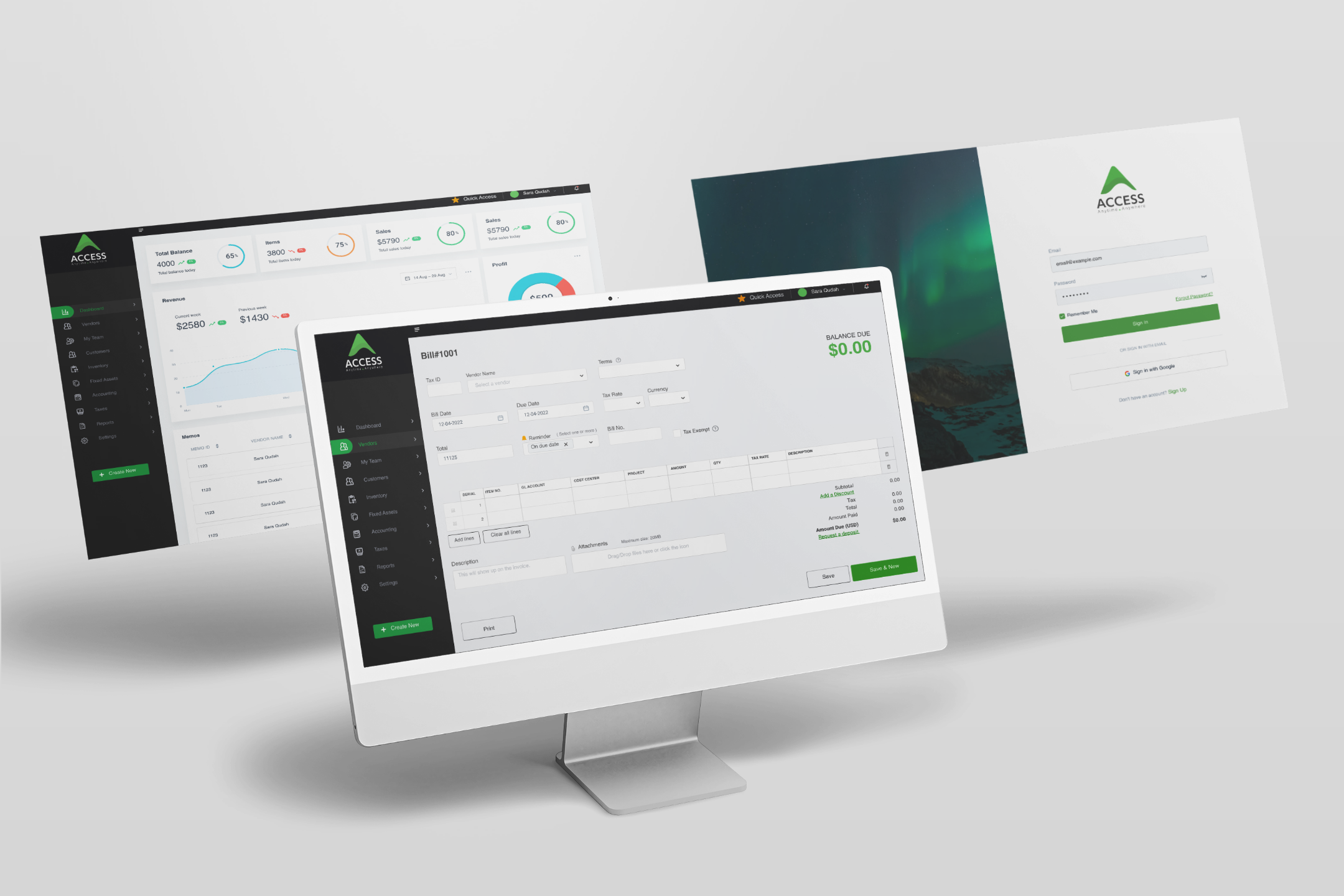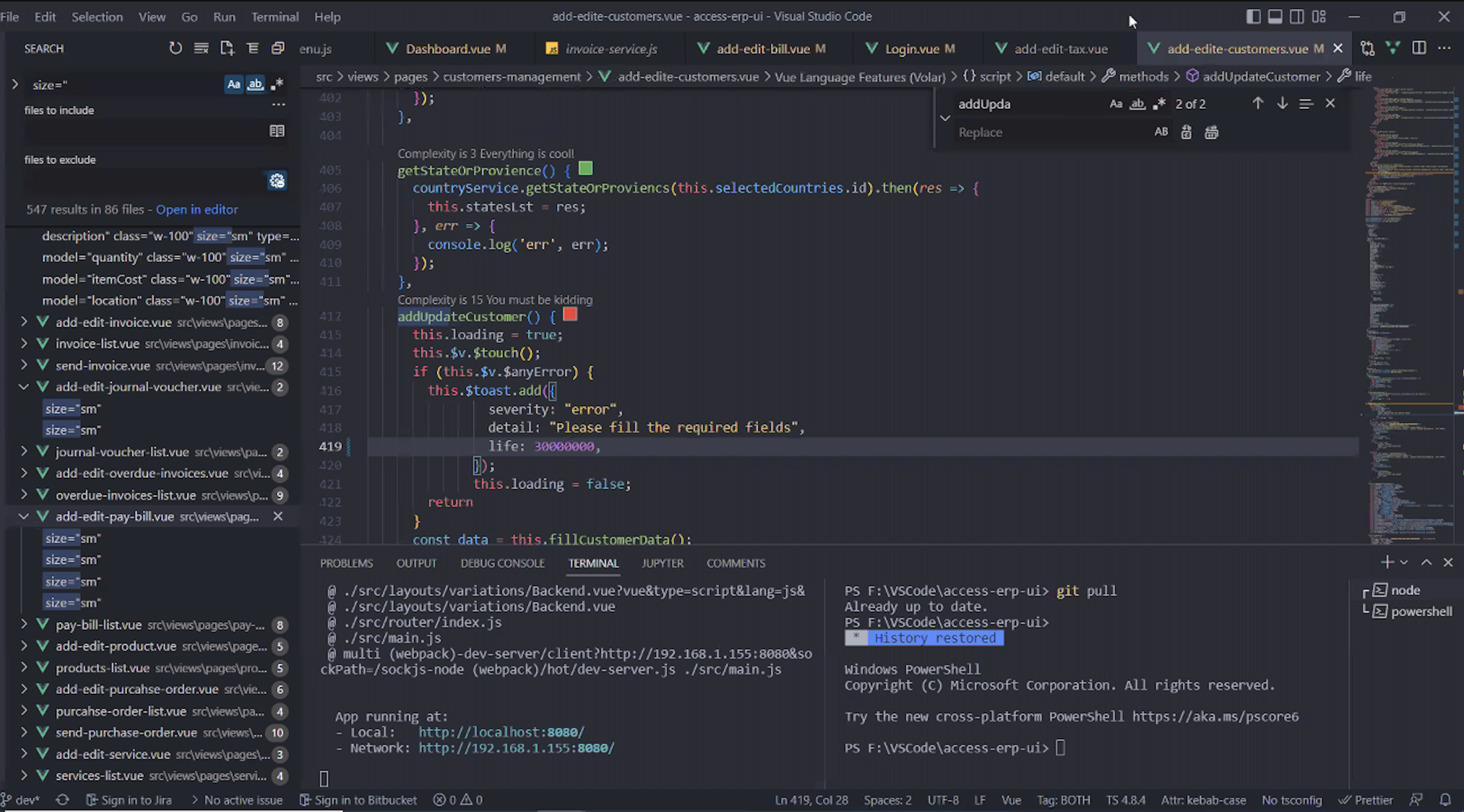ACCESS ERP: a new SaaS platform for enterprise businesses
I was brought in at the end of the first phase of product development to improve language consistency across the platform.
My role: UX Writer
The product
ACCESS ERP — an enterprise platform for accounting, inventory, and supply chain management
My work
-Product/brand research
-Basic voice and tone guidelines
-Comprehensive content audit and documentation
-Collaboration with engineers
Collaborators
Product Manager
UI/UX Designer
Engineers
Tools
Adobe XD
Google Docs
Slack
My approach
Here’s how I approached my work:
Information gathering: connected with team leads to learn more about the target customer and brand principles
Documentation: created a mini voice-and-tone guide
Auditing: conducted a comprehensive audit of product screens
Strategy: identified and documented content patterns to improve autonomy of product team
Application of improvements: conveyed change/fix edits and content guidance to engineers
The challenge
ACCESS ERP was a new product in need of a brush-up before Phase 1 delivery. I was brought in to fix inconsistencies in the product copy, including voice, grammar, and use of industry terminology.
This project addressed the product’s main module—an accounting system with approx. 125 screens.
Constraints
-Two-week timeline
-Lack of a style guide or editorial guidelines
-Team of non-native English speakers
STAGE 1 — Information gathering
This product was not yet on the market, so I had limited information about the needs and preferences of the target customer/end user. However, I gathered as much information as possible. Here’s how:
Met with the Product Manager to understand business goals and context
Reviewed the existing product, including onboarding screens still in development
Researched market competitors and industry terminology
Documented my findings in Google Docs, and shared them with several stakeholders
Challenges: understanding a largely undefined end user; working with a product team with limited time for discussion
STAGE 2 — Documentation
Before applying improvements, I had to create voice and tone guidelines to document the rules for writing content for ACCESS ERP. Given the time constraints, I synthesized the guidelines in a voice chart, a handy tool described in Torrey Podmajersky’s book, Strategic Writing for UX.
I also documented some industry terms and commonly accepted abbreviations as a helpful reference for the UI designer and lead engineers, several of whom were non-native English speakers.
Challenges: digesting and synthesizing large amounts of information; succinctly articulating brand guidance.
STAGE 3 — Auditing
In order to apply content improvements in a comprehensive way, I needed to conduct a content audit. Since this project was deadline-intensive, I focused my audit on elements that needed to be fixed immediately. I included screenshots of each instance for easy reference when working with the engineers.
Challenges: documenting many instances of misspelling, grammar errors, capitalization issues, and other lapses in consistency.
STAGE 4 — Strategy
With a complete understanding of the UX copy issues, I was able to identify patterns of inconsistencies. I applied this information to my voice and tone guide, while establishing clear priorities as we moved ahead. All of this would help me optimize my time working with the engineering team.
Challenges: processing large amounts of information, identifying patterns, and prioritizing tasks.
STAGE 5 — Application of improvements
Working with a lead engineer, I conveyed my recommendations, with a focus on patterns of errors in the product copy. We worked collaboratively to address the issues while completing the project on time and on target.
Challenges: working across language barriers with a cross-cultural team, completing the project on a short timeline.
RESULTS AND OUTCOMES
My work on this project contributed to several positive results, including the following:
A more user-friendly product experience
Comprehensive improvements to the product copy
Engineering and design teams better equipped to implement UX copy improvements
Documentation for branded copywriting utilizing UX writing best-practices




